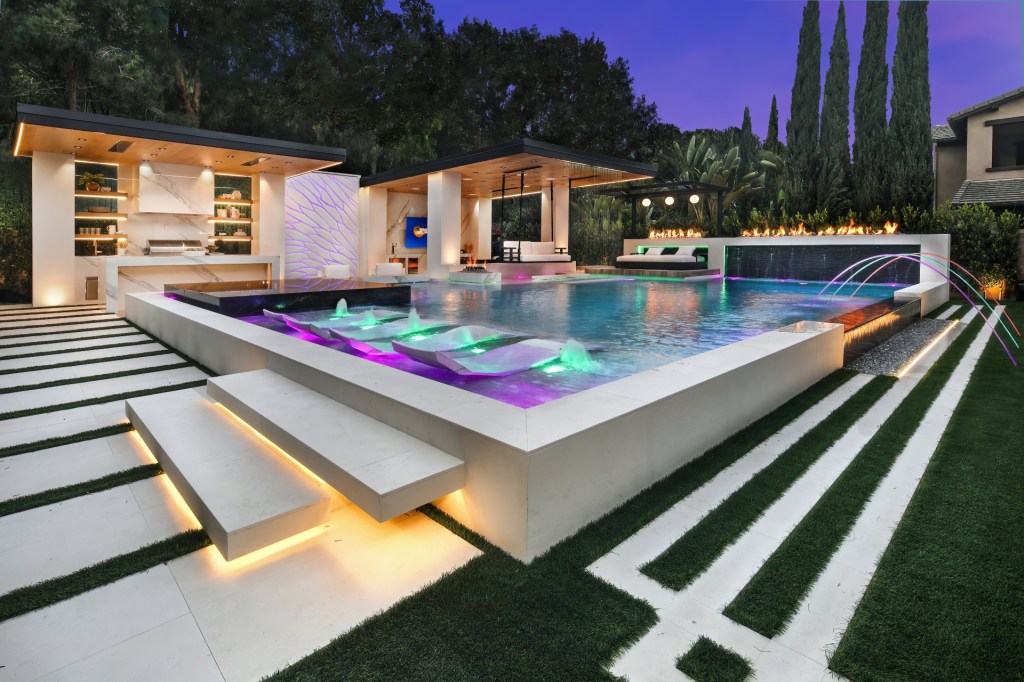This client wanted a modern design, and a pool that takes up as much of the yard as possible. Problem was, he also wanted a relative ton of features, including an outdoor kitchen, entertainment area, spa, and plentiful waterfeatures and fire bowls.
“The client wanted something that really would allow him to feel like he had walked into his own private resort,” says Justin Fox, creative director of Foxterra Design, based in Irvine, Calif. “And modern elements spoke to him a lot.”
To help everything fit together like a puzzle, Fox began with a focal point for the yard. Namely, he’d place a combination light-water feature between two covered patios. The acrylic panel features a leaf-type pattern backlit with color-changing led light. A gentle, relatively clear film of water oozes over the piece, not able to be caught in photographs.
This focal point helped ground everything visually. The two covered patios flanking it helped with the space dilemma. By placing most of the outdoor living features behind the pool, Fox could include more water in the space.The designer split the outdoor living area under two covered patios for balance. “If I had just put one patio cover on one side, it would have felt weighted,” Fox says. “So having them frame that central piece, to me, was really important.”
Under the smaller patio sits the barbecue and island. The more substantial patio houses the entertainment and lounging area, with large-screen TVs and mini bar. This structure overhangs the pool slightly, so the team could drop a rain curtain from it, into the pool.
“I brought my kids there, and they all got on the swing, and their goal was to reach out and get their feet wet under the rain curtain,” Fox says. “The clients do that, too. So [the rain curtain] ends up being this engaging piece that a lot of people love, whether it’s swinging toward it, swimming underneath it, or just touching it.”
Across the way sits another focal point: A textured water wall made of Corian falls into the pool, capped by a long, narrow fire bar. The Corian sheet came in only three segments that could be connected without visible seams, giving it a monolithic look.
